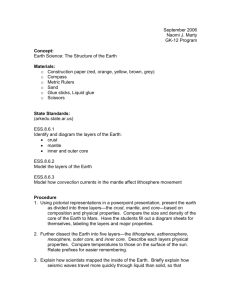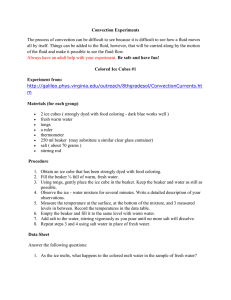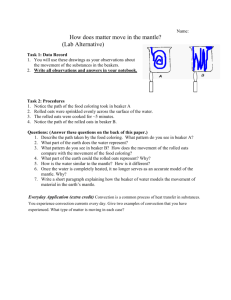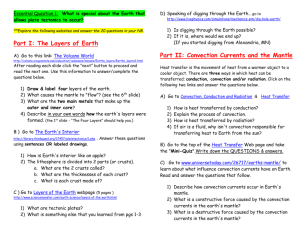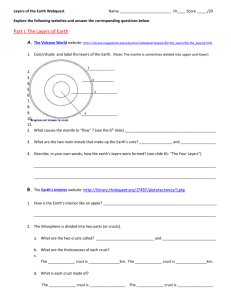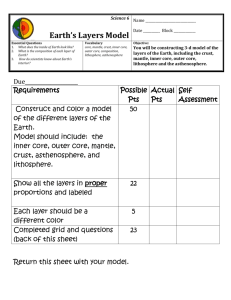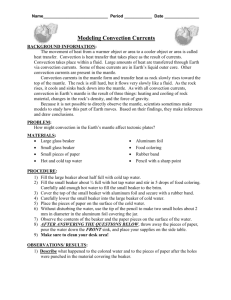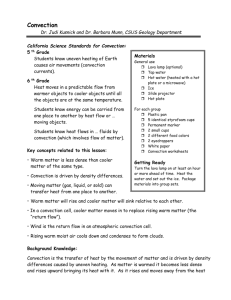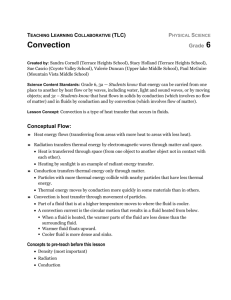Earth Layers Lesson Plan2 - GK
advertisement
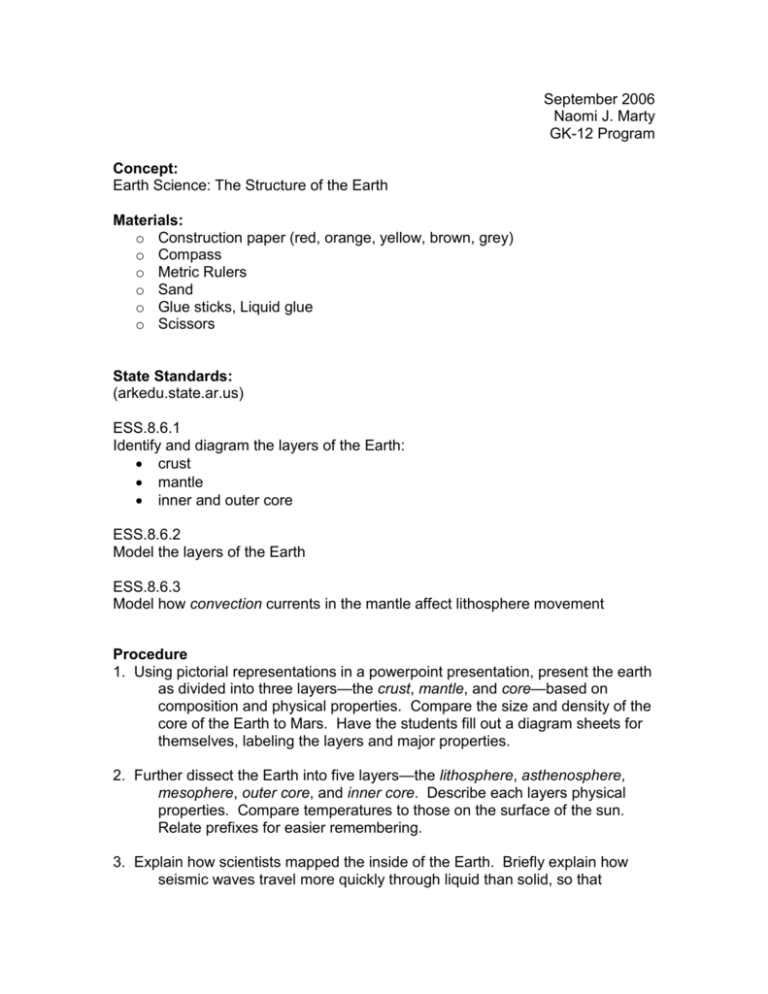
September 2006 Naomi J. Marty GK-12 Program Concept: Earth Science: The Structure of the Earth Materials: o Construction paper (red, orange, yellow, brown, grey) o Compass o Metric Rulers o Sand o Glue sticks, Liquid glue o Scissors State Standards: (arkedu.state.ar.us) ESS.8.6.1 Identify and diagram the layers of the Earth: crust mantle inner and outer core ESS.8.6.2 Model the layers of the Earth ESS.8.6.3 Model how convection currents in the mantle affect lithosphere movement Procedure 1. Using pictorial representations in a powerpoint presentation, present the earth as divided into three layers—the crust, mantle, and core—based on composition and physical properties. Compare the size and density of the core of the Earth to Mars. Have the students fill out a diagram sheets for themselves, labeling the layers and major properties. 2. Further dissect the Earth into five layers—the lithosphere, asthenosphere, mesophere, outer core, and inner core. Describe each layers physical properties. Compare temperatures to those on the surface of the sun. Relate prefixes for easier remembering. 3. Explain how scientists mapped the inside of the Earth. Briefly explain how seismic waves travel more quickly through liquid than solid, so that seismologists could measure the difference in the arrival times of seismic waves and calculate the density and thickness of each layer of the earth. Could have students calculate how long it would take for scientists to measure a seismic wave produced on the other side of the planet (lithosphere 7-8 km/sec, asthenosphere 7-11 km/sec, mesosphere 11-13 km/sec, outer core 7-10 km/sec, inner core 11-12 km/sec). 4. Have the students build a scaled model of the layers of the Earth with construction paper and label each layer and whether it is liquid or solid. 5. While the students are working on their models, prepare a demonstration to show the process of convection. Discuss what the term convection means and show the students a demonstration of colored water moving due to convection. Convection Model You will need ice, a hot plate, set of food coloring droppers, a large glass beaker (6 inches deep and 12 inches in diameter) and tap water. Warm the hot plate and fill the large glass beaker with lukewarm tap water. Gather the students, as this demonstration goes pretty quickly. Place the beaker on the hot plate and add several ice cubes to one side of the glass beaker. (They should all be floating together.) Add a drop of food coloring next to the ice. The food coloring should rush down with the melting ice water and hit the bottom of the beaker, slide across the bottom and, as it gets warm, rise back up. Because the ice is only on one side, the food coloring should start to circle around. At this point add a different color of food coloring and watch its progression like the first drop. Do this with the next two colors. I like the neon food colors in the order of purple, green, pink, then blue. By the end of this process the water will probably start to get muddled in color and you may not be able to see the flow anymore, but while the colors are fresh it is pretty easy to see the way the water is moving past the heat/cold sources. Reflection: 1. What worked? It was good for the students to label each layer on their model and the convection model was great, but for everything we needed to repeat the information and go through a questioning session before the students seemed confident with their answers to questions about either concept. We hung the models from the ceiling as a constant reminder of the structure of the earth. 2. What didn’t work? The compasses did not work. I couldn’t even get the compasses to work. We used patterns after we figured out that the compasses were not working well enough. We did not have enough time for the conversion calculations (not that they were too difficult), but I did explain how I did the calculations to scale down the model of the Earth. 3. What would I change for the next time? I would not let the kids use compasses.
